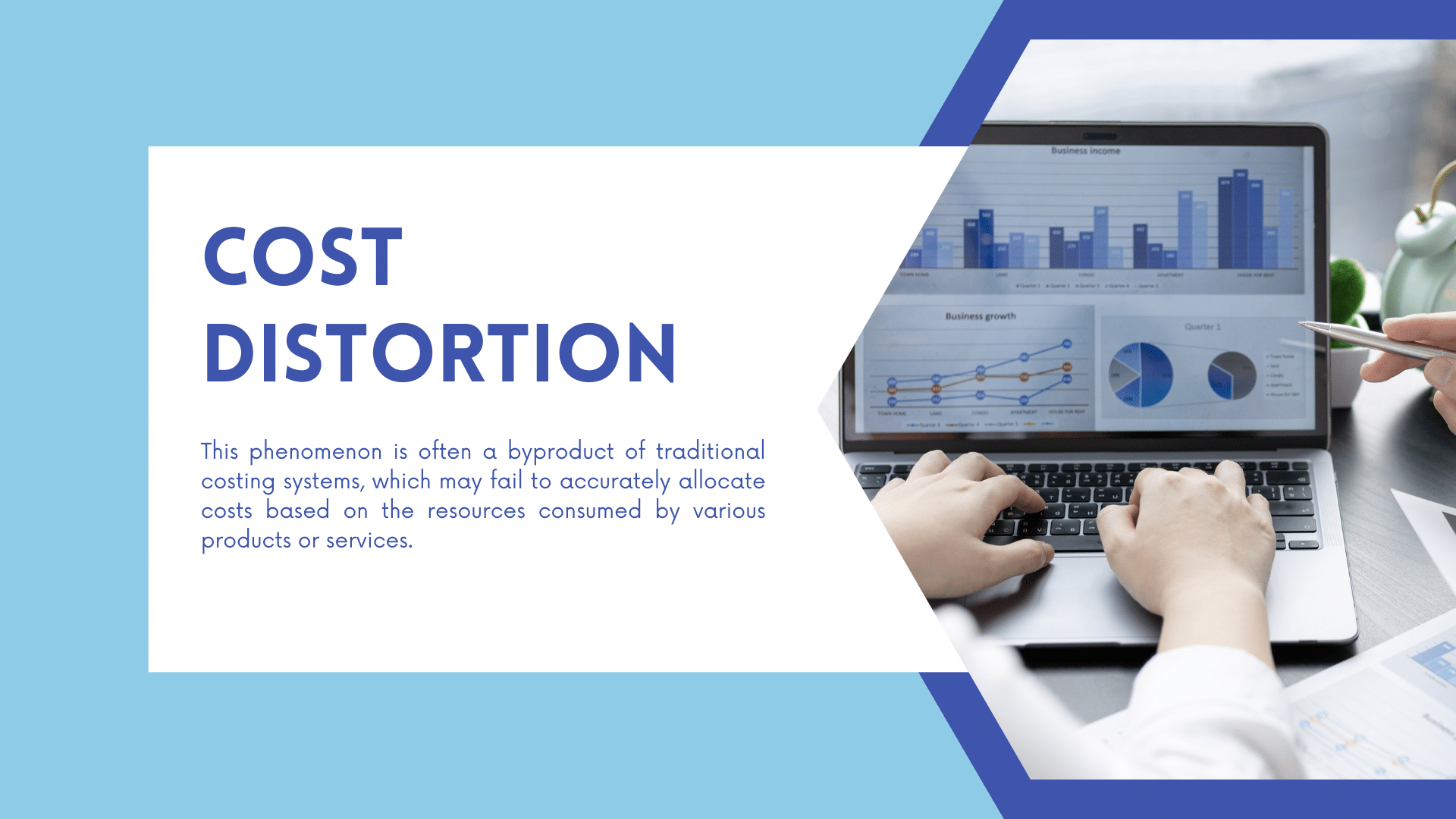For business owners and operations managers, optimizing the work environment is crucial for operational excellence. Grounded in academic research and real-world experience, this guide delves into the principles, tools, and strategies behind effective work design in an operations context.
Topics Covered:
- Work System Design
- Incentive Systems
- Job Analysis
- Automation
- Lean Thinking
- Process Improvement and Control
- Safety and Ergonomics
- Work Scheduling
- Team Effectiveness
- Motivation
The guide also highlights best practices and offers solutions to common design challenges. For those wishing to delve deeper, linked articles provide further insights.
For readers pressed for time or those seeking a condensed overview, we’ve distilled the core principles into a summary table at the end of the article. It offers a quick snapshot, providing an immediate grasp of each topic’s essence.
10 Keys to Work Design in Operations Management
1. Work System Design: Crafting Efficient, Effective, and Safe Workspaces
Work System Design is at the heart of operations management and is key to achieving organizational goals. By understanding and methodically analyzing work processes, companies can create work systems that are both efficient and employee-friendly.
- Components of Work System Design:
- Content Analysis: This deals with understanding the nature and substance of tasks, what is required to accomplish them, and the outcomes they produce.
- Methods Examination: Probing into how tasks are performed, the tools used, and the steps taken. This often ties into the standard operating procedures of a task.
- Relationships Investigation: Understanding how different tasks, roles, and departments interact and depend on one another. This ensures seamless inter-departmental operations.
- Environmental Assessment: Looking at the workspace and the larger organizational environment. This can involve everything from physical office design to corporate culture.
- Measurement: Utilizing metrics and analytics to assess task performance, time taken, quality of outcomes, etc. This provides objective data to guide improvements.
- Human-centric Approach:
- Recognizing that people are the primary agents carrying out tasks, their well-being, skills, and capabilities are central to designing effective work systems.
- Providing opportunities for employee feedback and incorporating their insights into the design process.
- Ensuring that the designed system aligns with human cognitive and physical capabilities and doesn’t induce undue stress or health risks.
- Physical, Social, and Environmental Aspects:
- Physical: Ensuring that the physical tools, machinery, and workspace support and augment human capability. This includes ergonomics and safety protocols.
- Social: Recognizing the importance of interpersonal relationships, teamwork, and communication in the work system. Designing systems that promote collaboration and minimize conflicts.
- Environmental: Accounting for factors such as lighting, air quality, noise levels, and even aesthetic considerations. A conducive environment can significantly improve efficiency and job satisfaction.
- Layout & Job Design:
- The spatial arrangement of equipment, workstations, and storage areas is vital. A good layout minimizes movement, reduces waste, and improves flow.
- Job design involves structuring roles, responsibilities, and tasks in a manner that aligns with both organizational goals and employee skill sets and aspirations.
- Continuous Improvement:
- Recognizing that work systems are not static. Regularly reviewing and refining based on changing organizational needs, technological advancements, and employee feedback.
Work System Design, when approached holistically, offers a pathway to create a workplace that is not just productive but also employee-centric. Organizations that invest in meticulous work system design often find themselves reaping benefits in the form of improved efficiency, higher employee satisfaction, and better overall outcomes.
2. Incentive Systems: Driving Performance and Engagement
Incentive systems are a vital tool for organizations aiming to enhance productivity, retain talent, and promote a positive work culture. By strategically recognizing and rewarding employees’ efforts, these systems can create a motivated, committed, and high-performing workforce.
- Types of Incentive Systems:
- Monetary Incentives: This includes salary hikes, bonuses, stock options, and commission-based payouts.
- Non-monetary Incentives: Such as recognition awards, professional development opportunities, additional leave days, and other perks.
- Long-term vs. Short-term Incentives: While bonuses might provide an immediate reward, stock options or pension contributions may incentivize longer-term loyalty and performance.
- Designing Effective Incentive Systems:
- Clarity and Transparency: Employees should clearly understand what they need to achieve to earn incentives.
- Tangible and Relevant Rewards: Incentives should be meaningful and directly relevant to the recipient.
- Flexibility: A one-size-fits-all approach may not work. Tailoring incentive programs to individual or team preferences can be more effective.
- Regular Review: Periodically evaluating the incentive program ensures its effectiveness and relevance over time.
- Benefits of a Well-implemented Incentive System:
- Increased Productivity: Employees often go the extra mile when they know their efforts will be recognized and rewarded.
- Employee Retention: Incentives can act as a bond, reducing turnover rates.
- Positive Work Culture: Recognition fosters a sense of belonging, leading to a more positive, collaborative work environment.
- Attract Talent: Competitive incentive systems can make an organization attractive to top-tier talent in the industry.
- Potential Pitfalls and Considerations:
- Unintended Consequences: For example, focusing only on sales numbers might lead to neglect of other critical aspects like customer service or team collaboration.
- Perceived Unfairness: If not transparently and fairly administered, incentive systems can lead to feelings of resentment or favoritism.
- Cost Implications: Organizations need to strike a balance between offering attractive incentives and maintaining fiscal responsibility.
- Incorporating Feedback: Regularly seeking feedback from employees can help in refining the incentive system, ensuring that it remains effective and resonant with the team’s needs and aspirations.
While incentive systems are a powerful tool, they require careful design, implementation, and monitoring. When executed well, they not only drive performance but also build a workplace where employees feel valued, motivated, and aligned with organizational goals.
3. Job Analysis: A Deep Dive into the DNA of Work Roles
Job analysis is the systematic study of jobs to determine what activities and responsibilities they include, the qualifications necessary, the conditions under which the work is performed, and the necessary personal attributes for success. It serves as the backbone of various HR functions.
- Components of Job Analysis:
- Job Content: This involves understanding the specific tasks, duties, and responsibilities that make up a job.
- Job Requirements: Identifying the skills, knowledge, and abilities required to perform the job.
- Job Context: Understanding the physical and social context in which the job is performed, such as work conditions, physical demands, and potential hazards.
- Methods of Job Analysis:
- Interviews: Engaging with current jobholders or their supervisors to understand the roles, challenges, and expectations.
- Observation: Directly watching employees perform their duties.
- Questionnaires: Using standardized forms to gather information about job tasks and responsibilities.
- Time and Motion Studies: Analyzing the specific time and movements required to complete a task, mainly used for roles with repetitive tasks.
- Job Diaries: Employees record their daily activities, which are then analyzed for job content.
- Applications of Job Analysis:
- Job Descriptions: A written document that outlines the nature of the job, tasks involved, necessary qualifications, and other relevant details.
- Performance Evaluations: Establishing performance standards and benchmarks based on the findings of job analysis.
- Training and Development: Identifying areas where training is required or where skills gaps may exist.
- Compensation and Benefits: Aligning pay scales and benefits based on job demands, responsibilities, and required qualifications.
- Recruitment and Selection: Ensuring the right fit by understanding what the job entails and what qualifications are needed.
- Challenges in Job Analysis:
- Rapidly Changing Roles: In today’s dynamic work environments, roles can evolve rapidly. Ensuring that job analyses remain updated can be a challenge.
- Subjectivity: Different individuals might have varied perceptions about a job’s requirements, leading to potential inconsistencies.
- Complexity: Some jobs, especially in areas like technology or research, might be so complex or specialized that a comprehensive job analysis becomes challenging.
- Modern Trends:
- Technology-aided Analysis: Advanced software and analytics can streamline the job analysis process, making it more efficient and reducing human biases.
- Competency-based Analysis: Shifting from task-focused to competency-focused, this approach looks at the broader skills and competencies required for success in a role.
Job Analysis is not just an HR exercise; it’s a strategic tool that provides insights into the very building blocks of an organization – its roles. By understanding the intricacies of each position, companies can make informed decisions about hiring, training, compensating, and even restructuring roles for maximum efficiency and effectiveness.
4. Automation: The Intersection of Technology and Efficiency
The Evolution of Automation: Historically, automation was associated with repetitive, large-scale manufacturing tasks in industries such as automotive and electronics. But with rapid advancements in technology, especially in the realms of artificial intelligence, machine learning, and robotics, the scope of automation has vastly expanded, touching virtually every industry from healthcare to finance, and even creative sectors.
- Benefits of Automation:
- Efficiency: Automated systems, once set up, can operate at a consistent pace without tiring, ensuring that operations run smoothly and continuously.
- Accuracy: By eliminating the potential for human error, automated processes can greatly increase the accuracy and consistency of tasks, especially those that are intricate or repetitive.
- Cost Savings: Over time, automation can lead to significant reductions in labor costs and other operational expenses.
- Scalability: Automated systems can handle increased loads or demands without proportionate increases in resources or costs.
- Integration with Human Workforce:
- Cobots: Short for “collaborative robots”, cobots are designed to work alongside human workers rather than replace them. They handle tasks that are mundane, repetitive, or hazardous, allowing humans to focus on more value-added or complex activities. For a deeper dive, the article “Cobots in SMEs” provides insights into how smaller businesses can benefit from this technology.
- Human-Machine Collaboration: Automation doesn’t always imply a complete replacement of human tasks. In many cases, it’s about augmenting human capabilities and making tasks easier, faster, or more effective.
- Challenges and Considerations:
- Initial Costs: Implementing automation can require a significant upfront investment in technology and training.
- Job Displacement: While automation can enhance efficiency, it can also lead to concerns about job losses. It’s vital for businesses to consider retraining and upskilling opportunities for affected employees.
- Maintenance: Automated systems, while reducing ongoing operational costs, might require periodic maintenance and upgrades.
- Industry 4.0 and The Future:
- Smart Manufacturing: Often synonymous with Industry 4.0, this concept is about integrating automation with other digital technologies like IoT (Internet of Things), big data, and cloud computing to create self-optimizing production systems.
- Adaptive and Predictive Systems: Future automation systems will not only execute tasks but will also predict failures, adapt to changes, and self-optimize for better performance. The article “Industry 4.0: Insights” delves deeper into this transformative industrial revolution.
- Continuous Learning & Upgradation:
- Technological Performance: As technology continues to evolve at a breakneck speed, staying updated is crucial. Businesses need to ensure that their automation strategies are flexible and scalable, allowing them to integrate new technological advancements. The article “Technological Performance: The Pathway to Success” sheds light on optimizing technological capabilities for business success.
To conclude, automation represents a dynamic intersection of human ingenuity and technological advancement. While it offers numerous benefits, businesses must approach automation with a clear strategy, balancing efficiency gains with ethical considerations and workforce implications.
5. Lean Thinking: The Philosophy of Efficiency and Continuous Improvement
Origin and Core Principle: Originating from the Japanese manufacturing sector, particularly from Toyota’s production system, Lean Thinking has transcended its automotive roots to become a global benchmark in operational efficiency across various industries. At its heart, Lean emphasizes delivering maximum value to the customer while minimizing waste.
- The Five Principles of Lean:
- Value: Everything begins with recognizing what the customer values in a product or service. This value acts as the guiding light for the entire production process.
- Value Stream: Once the value is defined, businesses map out every step of their production process, highlighting areas that add value and those that don’t. This “value stream mapping” is crucial to identify bottlenecks and wasteful activities.
- Flow: After waste is removed from the value stream, the next step is ensuring that the remaining value-adding steps flow smoothly without interruptions or delays.
- Pull: Traditional production processes often rely on forecasted demands, producing goods in anticipation of future sales. Lean, however, advocates for a “pull” system where products are made based on actual demand, reducing inventory costs and waste.
- Perfection: Lean is a journey, not a destination. Continuous improvement is embedded in its DNA, pushing businesses to perpetually refine and enhance their processes.
- The Eight Wastes: Central to Lean is the concept of eliminating waste, which can be remembered using the acronym “DOWNTIME”: Defects, Overproduction, Waiting, Non-utilized talent, Transportation, Inventory, Motion, and Extra-processing. By identifying and addressing these wastes, businesses can significantly boost their efficiency.
- Empowering the Workforce: Unlike traditional top-down management styles, Lean promotes a bottom-up approach. Employees on the front lines, being closest to the processes, often have the best insights into areas of improvement. By involving them actively in decision-making, Lean harnesses these insights and fosters a culture of ownership and collaboration.
- Visual Management: Lean enterprises often use visual tools like Kanban boards, Andon systems, and Gemba walks. These tools make processes transparent, problems instantly recognizable, and solutions more collaborative.
- Flexibility & Adaptability: Lean organizations are agile. By reducing batch sizes and emphasizing quick changeovers, they can respond swiftly to market changes, ensuring they meet customer demands efficiently.
- Sustainability: Lean isn’t just about short-term gains. Its principles, when integrated deeply into the organizational fabric, lead to sustainable improvements, creating businesses that are resilient, adaptive, and continually evolving.
Lean Thinking is more than just a set of tools or practices; it’s a philosophy that, when adopted holistically, can transform businesses into more efficient, adaptive, and customer-centric entities. It fosters a culture where every employee, from the shop floor to the C-suite, is dedicated to delivering value and eliminating waste in all its forms.
6. Process Improvement and Control: The Pillars of Operational Excellence
In the dynamic world of business, staying stationary often means falling behind. Companies need to ensure that their processes are not only efficient but also adaptive to the ever-changing business environment. Process improvement and control are the mechanisms through which organizations can achieve this. Here’s a deeper insight into their relevance:
- The Ever-evolving Nature of Processes: No process is perfect from inception. Even if a process was considered efficient at one point in time, market dynamics, technological advancements, or customer preferences can necessitate changes. Process improvement recognizes this dynamism and provides a structured way to analyze, refine, and optimize workflows continually.
- The Quantitative Approach: Process control, on the other hand, emphasizes the consistent application of processes to achieve predictable results. It’s grounded in data and often utilizes key performance indicators (KPIs) to measure process efficacy. By continuously monitoring these KPIs, organizations can identify deviations in real-time and make immediate corrections.
- Risk Mitigation: Unmonitored processes can become breeding grounds for inefficiencies and errors. By regularly revisiting and refining processes, businesses can preempt potential risks, be they financial, operational, or reputational.
- Enhanced Customer Satisfaction: Streamlined processes often lead to faster turnaround times, consistent product or service quality, and improved responsiveness—all of which directly influence customer satisfaction.
- Cost Efficiency: Efficient processes often mean reduced wastage, fewer redundancies, and optimal utilization of resources, leading to significant cost savings.
- Empowered Employees: An environment that emphasizes process improvement encourages innovation. Employees, being at the forefront of processes, can provide valuable insights into potential areas of improvement. By involving them in the improvement initiatives, organizations not only tap into these insights but also foster a sense of ownership and motivation among the workforce.
- Adaptive Strategy: With the business environment being so volatile, strategies need to be adaptive. Regular process improvement and control ensure that organizations remain agile and able to pivot their operations based on changing strategic directions.
For a broader perspective on process-centric strategies and quality-driven business models, consider reading:
- Value Chain: Strategizing Competitive Advantages – A deep dive into understanding how value creation across various business functions can become a competitive differentiator.
- Business Quality: Concept & Definition – Explore the multifaceted concept of quality in the business realm, its implications, and its role in achieving long-term success.
In essence, process improvement and control are more than just operational tools; they are foundational to a company’s growth, adaptability, and long-term success.
7. Safety and Ergonomics: A Dual Focus for Workplace Excellence
In today’s competitive business landscape, the importance of productivity and efficiency cannot be overstated. Yet, an area that should never be overlooked in the pursuit of operational excellence is the safety and ergonomic well-being of the workforce. Here’s a closer look at the profound impact of integrating safety and ergonomics into the work environment:
- Preventing Work-related Injuries: Every year, countless hours are lost due to work-related injuries. Ergonomically designed workstations and tools can significantly reduce musculoskeletal disorders, repetitive strain injuries, and other common workplace ailments.
- Boosting Productivity: When an employee is comfortable, they’re naturally more productive. Ergonomics not only minimizes the risk of injury but also reduces fatigue and discomfort. This, in turn, can enhance work output and efficiency.
- Improving Quality of Work: Discomfort can lead to distractions, and distractions can lead to errors. An ergonomically designed environment ensures that employees can focus solely on their tasks, thereby enhancing the quality of work.
- Promoting Employee Morale: Employees feel valued when they see their employer investing in their well-being. This boosts morale, fosters a positive work culture, and can significantly reduce turnover rates.
- Compliance with Regulations: Many regions have strict regulations in place to ensure that workplaces meet specific ergonomic standards. Adherence to these standards not only prevents potential legal repercussions but also demonstrates a company’s commitment to its employees.
- Cost Savings: While there’s an initial investment involved in setting up an ergonomically sound workspace, the long-term savings—stemming from reduced medical claims, lesser absenteeism, and increased productivity—often outweigh the costs.
- Inclusive Design: Ergonomics also paves the way for inclusive design. By considering the diverse needs of all employees, including those with disabilities, organizations can create a more inclusive and diverse workplace.
- Continuous Improvement: Ergonomics is not a one-time initiative. It requires continuous assessment and improvement. Regularly evaluating workspaces, getting feedback from employees, and staying updated with the latest ergonomic research ensures a workplace that evolves with the needs of its workforce.
In conclusion, safety and ergonomics represent more than just compliance or corporate responsibility. They are strategic imperatives that, when executed well, can result in a thriving, productive, and harmonious work environment.
8. Work Scheduling: Harmonizing Operations and Employee Needs
In the intricate dance of operations management, work scheduling acts as the choreographer. It ensures that the right people are in the right places at the right times, aligning the operational needs with employee availability and preferences.
Here’s an in-depth look at the nuances and importance of effective work scheduling:
- Operational Consistency: An efficiently mapped-out schedule guarantees that all shifts and roles are adequately staffed. This consistency ensures uninterrupted operations, meeting business objectives without overburdening resources or leaving gaps in service.
- Employee Satisfaction: By factoring in employee preferences such as desired shifts, days off, or rotations, organizations can significantly boost morale. When employees feel their personal needs are respected, they are more likely to be engaged, punctual, and productive.
- Skill Matching: Assigning shifts based on an individual’s skills and expertise can have a profound impact. For instance, scheduling seasoned employees during peak times or complex operations can optimize performance and reduce errors.
- Flexibility and Adaptability: The ability to quickly adjust schedules in response to unforeseen events, such as sudden spikes in demand or unexpected employee absences, is essential. Adaptive scheduling can help navigate such challenges without derailing operations.
- Cost Efficiency: Intelligent scheduling can also lead to cost savings. By aligning workforce availability with demand patterns, businesses can avoid unnecessary overtime costs or underutilization of staff.
- Long-term Planning: While short-term scheduling is pivotal for day-to-day operations, long-term scheduling helps in strategizing for seasonal demands, potential staff turnovers, training sessions, and more.
- Employee Growth: Thoughtfully planned scheduling can also facilitate employee growth. Rotating roles or departments can expose employees to varied experiences, fostering versatility and holistic growth.
- Transparency and Communication: Using digital tools or platforms to share schedules ensures that employees can access their shifts easily, request changes, or communicate constraints. This transparency reduces confusion and fosters better coordination.
- Compliance and Regulations: In various industries, there are legal regulations concerning working hours, overtime, and rest breaks. Effective scheduling ensures compliance with such regulations, safeguarding organizations from potential legal complications.
To master the art and science of scheduling, diving deeper into production planning can provide valuable insights. Relevant reads include:
- Global Production Plan: Strategic Production Plan!: This article sheds light on the macro-level strategy of aligning production schedules with global objectives and demands.
- Integrated Production Plan: Explanation and Free File!: Delve into the holistic approach of integrating various facets of production, from procurement to dispatch, and ensuring seamless operations. Note: This topic seems to be mentioned twice – it might be beneficial to replace one with another relevant article for a broader perspective.
- Master Production Plan: Simple Explanations!: Dive into the foundational blueprint of production scheduling. This article demystifies the Master Production Plan, showcasing its importance in aligning resources with demand. Explore straightforward explanations that elucidate how this plan ensures operational consistency, meets delivery commitments, and optimizes resource utilization, all while serving as a keystone for an organization’s manufacturing processes.
In summation, work scheduling is more than just assigning shifts. It’s about harmonizing the rhythm of operations with the individual beats of each employee, creating a cohesive and efficient symphony of productivity.
9. Team Effectiveness: Building Cohesive Units in the Workplace
At the heart of every thriving organization lies effective teamwork. While individual prowess is invaluable, the collective synergy of a team often produces results greater than the sum of its parts. An optimal work design plays a pivotal role in fostering such high-performing teams. Here’s a closer look at the factors that drive team effectiveness:
- Clear Objectives: For a team to function effectively, there must be a shared understanding of the team’s objectives and goals. Clearly defined roles, expectations, and outcomes ensure that every team member knows their specific contributions and works in tandem with others.
- Empowerment: Empowering teams means entrusting them with the authority to make decisions. This not only expedites processes but also fosters a sense of ownership and responsibility among team members. An empowered team often feels more invested in the outcomes, leading to enhanced commitment and drive.
- Resource Availability: Providing teams with the necessary tools, technology, and training is crucial. Whether it’s the latest software, access to relevant data, or training sessions, equipping teams with what they need ensures that they can function efficiently and tackle challenges effectively.
- Open Communication: A culture where team members feel free to voice their opinions, share ideas, and raise concerns is pivotal for team effectiveness. Open channels of communication foster trust, minimize misunderstandings, and promote collaborative problem-solving.
- Diversity and Inclusion: Diverse teams, comprising members with varied skills, experiences, and perspectives, tend to be more innovative and adaptive. An inclusive environment, where every member feels valued and respected, can harness this diversity to its fullest potential.
- Conflict Resolution: Disagreements are natural in teams, but the key lies in how they’re addressed. Efficient conflict resolution mechanisms ensure that differences are resolved constructively, preventing them from escalating and disrupting the team’s harmony.
- Regular Feedback: Regular check-ins and feedback sessions provide teams with insights into their performance. Recognizing achievements and addressing areas of improvement in a constructive manner can boost morale and drive continuous improvement.
- Team Cohesion: Building strong interpersonal relationships within the team can be invaluable. Team-building activities, shared experiences, and open interactions can foster camaraderie, resulting in a more cohesive and resilient unit.
- Adaptability: In the ever-evolving landscape of business, the ability of a team to adapt to changes is crucial. Work designs that promote flexibility and encourage teams to learn and adapt to new scenarios ensure longevity and effectiveness in dynamic environments.
In essence, team effectiveness isn’t just a by-product of assembling skilled individuals; it’s about creating an environment that nurtures collaboration, respect, and shared purpose. With the right work design principles, organizations can mold teams that are not only efficient but also deeply committed to their collective mission.
10. Motivation: The Cornerstone of Employee Engagement and Success
Engaged employees are the driving force behind a successful organization. Their commitment, energy, and enthusiasm translate into superior performance, innovation, and a genuine connection to their work and company. Among the multitude of factors contributing to this engagement, motivation stands paramount. Let’s explore the key elements that can amplify motivation:
- Rewards and Recognitions: Tangible rewards, such as bonuses, promotions, or gifts, can serve as strong motivators. However, intangible recognitions, like praise, acknowledgment in company meetings, or a simple “thank you” note, often hold equal, if not more, value. These gestures convey appreciation, making employees feel valued for their contributions.
- Autonomy: Empowering employees with a sense of control over their tasks fosters responsibility. When employees are trusted to make decisions, it not only boosts their self-confidence but also imbues a sense of ownership. This autonomy, when combined with clear expectations, can lead to higher levels of creativity and innovation.
- Trust: A culture of trust encourages open communication, reduces fear of making mistakes, and fosters collaboration. When employees believe that their managers trust their capabilities and intentions, they’re more likely to take risks, share ideas, and collaborate without reservations.
- Purpose and Meaning: Employees are more motivated when they perceive their tasks as meaningful. Understanding the broader impact of their work and how it aligns with the organization’s mission can instill a deeper sense of purpose, driving them to excel.
- Growth Opportunities: The prospect of personal and professional growth can be a significant motivator. Opportunities for training, upskilling, or attending workshops not only enhance their skill set but also make them feel that the organization is invested in their future.
- Feedback and Communication: Regular feedback, both positive and constructive, helps employees understand where they stand and what is expected of them. Open channels of communication where they can share their concerns, ideas, or feedback can make them feel heard and important.
- Work Environment: A supportive, inclusive, and positive work environment can significantly enhance motivation. A space where employees feel safe, respected, and part of a community encourages them to contribute their best.
In summary, motivation isn’t just about financial incentives; it’s about creating an environment where employees feel valued, trusted, and empowered. Organizations that prioritize these motivational elements not only boost productivity but also build a loyal, committed workforce that drives success.
Summary Table: Key Principles in Operations Management
For those pressed for time or seeking a brief introduction to the article’s main points, the following table presents a succinct summary of each crucial topic in operations management.
By perusing this table, readers can quickly grasp the essence of each subject and determine areas they might want to explore in more detail.
| Topic | Brief Description |
| Work System Design | Analyzing work activities and systems to ensure efficiency, effectiveness, and safety, considering human, physical, and environmental aspects. |
| Incentive Systems | Mechanisms to enhance work performance and satisfaction, linking rewards or recognitions to performance outcomes. |
| Job Analysis | Understanding job tasks and requirements to form the basis for job descriptions, evaluations, and tailor-made designs. |
| Automation | Using technology to automate manual tasks, saving resources, and improving accuracy. |
| Lean Thinking | A focus on minimizing waste and optimizing processes. Encourages employee involvement and creativity. |
| Process Improvement and Control | Streamlining processes for consistency and efficiency, with regular monitoring for optimal results. |
| Safety and Ergonomics | Designing work processes and stations to prioritize the health, safety, and productivity of employees. |
| Work Scheduling | Creating efficient schedules that align with employee preferences and skills for optimal operations and morale. |
| Team Effectiveness | Fostering collaboration within teams by empowering employees and providing necessary resources. |
| Motivation | Boosting productivity and morale through rewards, autonomy, and fostering trust within the workforce. |
Conclusion
Operations management thrives on foundational elements like Work System Design, Incentive Systems, and Automation. Each facet, from meticulous work processes to ensuring employee well-being, is crucial for organizational success. The balance between operational efficiency and workforce satisfaction is evident throughout this guide.
By embracing these principles, businesses can achieve operational excellence, fostering a culture of continuous improvement and growth. In essence, effective work design is the linchpin for a prosperous and harmonious business future.








